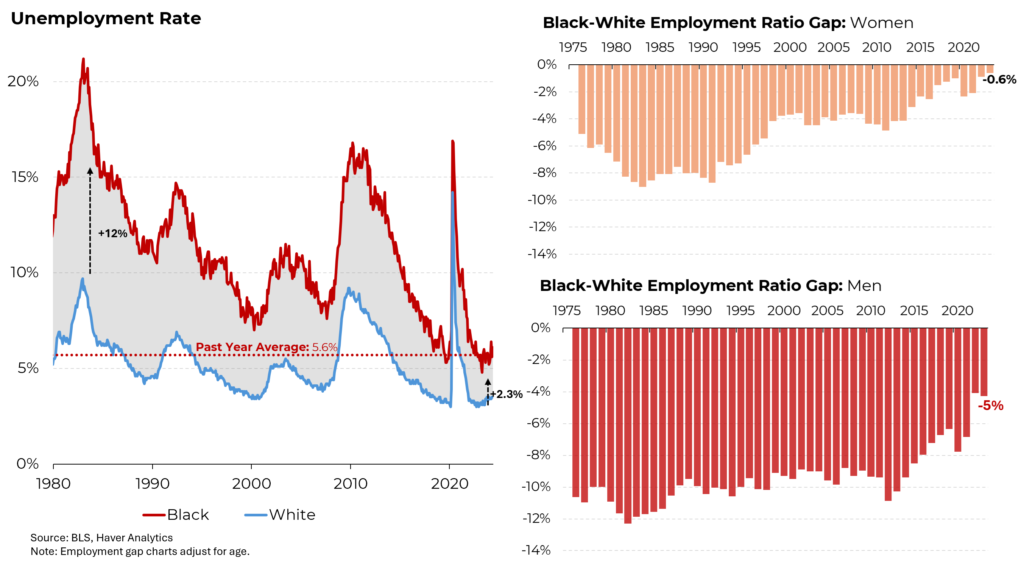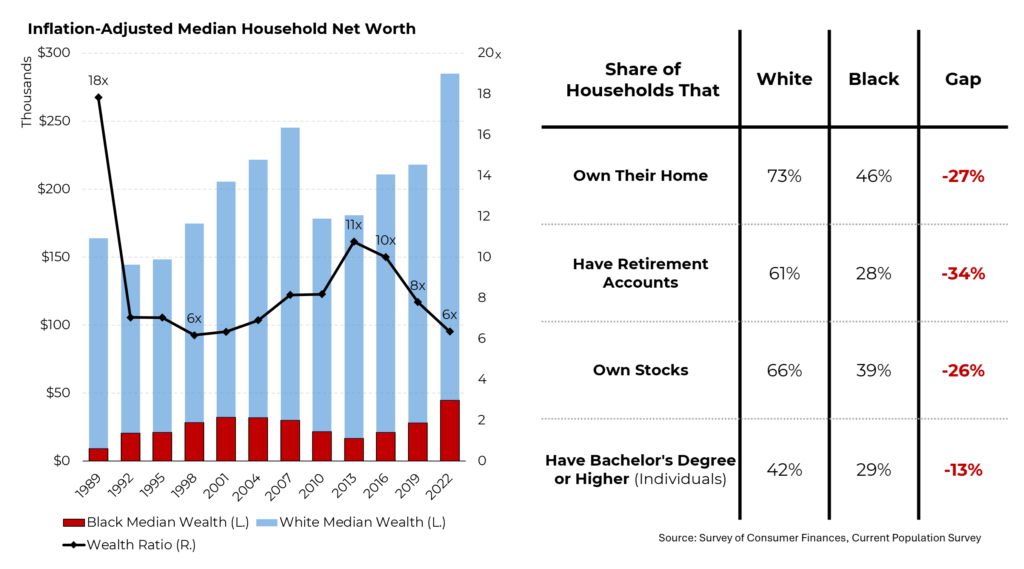Today is Juneteenth, a commemoration of the end of slavery in Texas, the last state to abolish the reprehensible practice. And so it is a good day to reflect on the accomplishments of Black Americans and the challenges that still lay ahead as we strive to achieve true equality.
Under the leadership of President Biden, the unemployment rate for Black Americans hit an all-time low of 5.5% in 2023, although still meaningfully above the 3.3% unemployment rate of whites. (More recently, the Black unemployment rate has edged up to 6.1% while the white unemployment rate is also up slightly, to 3.5%.) That progress has helped narrow the income gap between Black and white Americans. Between the second half of 2019 and the second half of 2023, real average wages (i.e., after adjusting for inflation) rose by 9.5% for Black workers, compared to a 6.7% increase for white workers.
Another sign of progress is that the gap in the percentage of Blacks at work compared to whites has narrowed to record lows. After adjusting for demographic differences, Black women are now essentially as likely to be working as white women, while the 5 percentage point gap for Black men compared to white men compares favorably to the 11 percentage-point gap that existed just over a decade ago.
That good news aside, there is still a long distance for Blacks to go. Median household incomes for Black Americans remain substantially below that of white Americans ($76,000 compared to $119,000). Hispanic Americans are doing marginally better than Black Americans while Asians are substantially outperforming even whites.
Equally troubling, while the gap between Asian households and white households as grown, the gap for both Black and Hispanic Americans has remained stagnant at around 65% the median income of whites..
Also disappointing is the lack of recent progress in wealth creation among Blacks, compared to whites. Yes, the disparity has decreased substantially from the late 1980s, when the median white household had nearly 18 times the net worth of Blacks. But at 6.3 times, the gap today is roughly the same as it was two decades ago.
Other indicators of economic progress are also widely divergent. Blacks are far less likely to own their homes (46% compared to 73%), to have retirement accounts (28% compared to 61%), to own stocks (39% versus 66%) or to have a bachelor’s degree or higher (29% compared to 42%).





